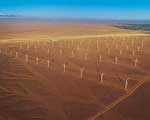Nuclear plant to be built in Shandong
By Dinakar Sethuraman and Rakteem Katakey (China Daily)
2011-03-24 14:06
|
|
SINGAPORE - China will start building a nuclear power plant next month using fourth-generation technology that may be less susceptible to meltdown than Japan's damaged Fukushima Daiichi plant.
"The world's first high-temperature, gas-cooled reactor" will be installed at Rongcheng in Shandong province, Cui Shaozhang, deputy general manager at Huaneng Nuclear Power Development Co, said in an interview on Tuesday in Singapore.
"There are differences between the Japanese and Chinese reactors," Cui said. "Japan's Fukushima plant was using old technology while Chinese reactors are more advanced."
Japan is trying to prevent a meltdown at Fukushima, where the oldest reactor started operating in 1971, after cooling systems were knocked out by a 9.0-magnitude earthquake and tsunami on March 11.
The Rongcheng plant will use helium, an inert gas, in its cooling system, and the reactor cores will be able to withstand temperatures exceeding 1,600 C for several hundred hours without melting down, China Business News said this week.
| ||||
China, which is planning to build more nuclear reactors than any other country, said on March 16 that it had suspended approval of all new atomic projects until a safety review is carried out.
China Huaneng, China Nuclear Engineering Corp and Tsinghua University are joint investors in the 200-megawatt Rongcheng demonstration project, according to Huaneng's brochure. In July 2010, China National Nuclear Corp, the country's biggest atomic plant builder, reported a successful test of an experimental reactor using fourth-generation technology.
China started operating its first commercial nuclear station in 1994. It currently has 14 reactors in operation, 26 under construction and 28 planned, according to data on the World Nuclear Association's website.
The nation's nuclear power capacity may reach 40 gigawatts (gW) by 2015 and exceed 70 gW by 2020, Han Wenke, head of energy research at the National Development and Reform Commission, said last June. China had 10.82 gW of nuclear power capacity at the end of 2010, the China Electricity Council said in February.
China Huaneng Group aims to produce about 35 percent of its electricity using clean technology by 2020 to cut pollution, President Cao Peixi said earlier, adding that the company plans to reduce coal consumption per kilowatt-hour of electricity by about 10 percent by 2020.
Bloomberg News







